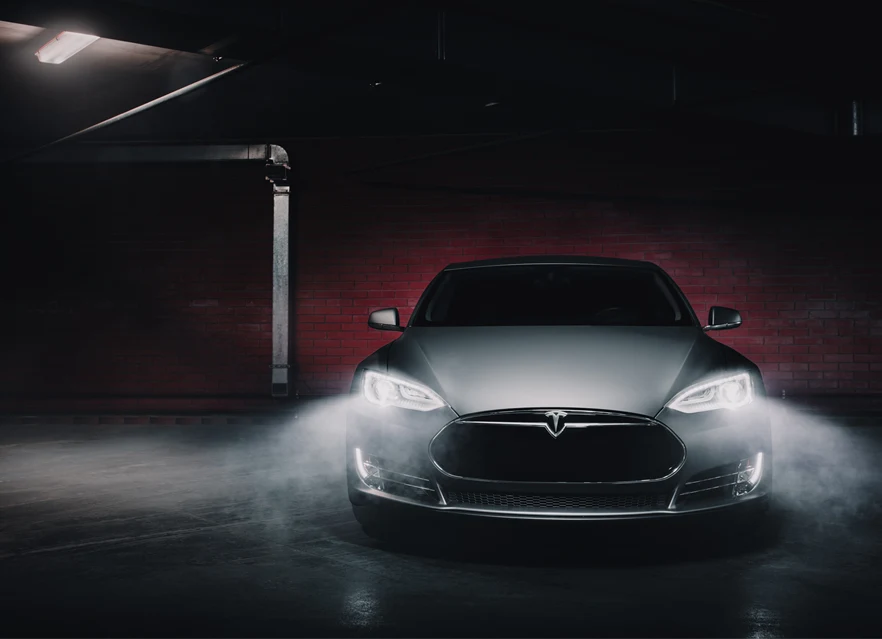
For those that haven’t had a chance to read the article, can you briefly highlight the main takeaways from the Tesla teardown?
There are several takeaways. First of all, I would like to bring up the sheer size of these gears – they are huge! The weight of the final drive gear is 2-3 times heavier than anything produced today by PM that I have come across. This leads to the next take away, where can we find customers that have the experience and capability to produce of gears this size? The short answer is that we can´t, since it has not been done. There are some customers that have the press size necessary, so we have to start there.
Then there is the cost and the general belief in the PM industry that heavy parts, meaning 1 kg and above, are not cost competitive. That is something that we wanted to challenge since there would not be a lot of business in automotive parts for the sinter industry if that was true. If we try and compare apples to apples, the sinter route is more cost efficient. However, other factors play a very important role such as:
- Free capacity. Transmission manufacturers almost always favour internal production, and for some it is a strategy.
- We have seen this several times that the unions protect their gear production jobs.
- Lack of powder metal gear suppliers that can do the job. Conventional gear manufacturers are highly specialised, and their factories are built to make gears and gears alone. Their engineers talk gears and gears alone powder metal parts factories are built to be able to make a variety of parts, with few exceptions.
- The transmission industry is very conservative. Trying new things is not always high on their agenda.
The last takeaway is more on the design side; with clever PM specific design it is possible to improve the gear performance to meet durability demands. We want to avoid adding process steps as much as possible since that eats into the competitiveness of the technology.
What surprised you most during this study?
A couple of things; when I did the calculations I saw that, from a material standpoint, the same potential of powder metal mass in gear wheels is present in these fixed ratio transmissions as is found in a 6 speed manual gearbox, so the same business potential is there, it is just concentrated to two big gears that require really big presses. I also enjoyed doing the CAD modelling and Kisssoft calculations, I have not done that in quite a while so fun to reconnect with some more hands-on engineering work.
What could this mean for Höganäs and the future of PM? Do the discoveries change our approach to how we approach electrification with our powders?
This question has a lot of depth to it and from my perspective it has some consequences. I think that these very big and complex parts will be made by a handful of customer companies globally, so we must be aware of which customers that will rise to the occasion and make sure we are their first choice. I also think there will be some consolidation, which is good, as we need more resource strong players in PM that can design and manufacture not only parts but systems, and thereby be more attractive partners to OEMs and Tier 1 manufacturers.
I also think that Höganäs has to look towards systems with our customers and OEMs for the same reasons. Not only look at individual parts but the whole gear box, preferably with the E-machine. The 2 smaller gears in BEV layshaft transmissions are not suitable for powder metal due to them being an integral part of the shaft and therefore not compactable. The system level approach becomes easier from a technical standpoint with these parallel shaft designs, compared to 10 speed automatics and DCTs that is the norm for ICE vehicles, lowering the threshold for new players.
What are the major opportunities that this study highlighted?
There is a lot of material in very few gears. When working with old school transmissions with 12-15 smaller gears, every conversion of a single 600 gram gear requires the same amount of work from us as a 3,600 gram gear in the BEV transmission. We can also pitch the noise reduction and sustainability aspect using powder metal, which becomes more important as we move forward. The OEMs are also less conservative since this is uncharted territory for them and they need to investigate different solutions, so the willingness to try PM has increased.
Are there other engine, transmission or electric motor technologies where our powders could be even more useful? How do steel/iron powders fit into the future of vehicles and transportation?
A lot could be said around this question but in near term, meaning 15-20 years, battery technology will be dominant. In my first job I was involved with powering a Hyundai Santa Fe with a fuel cell. This was back in 2001, it took 15 minutes to start the car since the stack had to be heated. A lot has happened since then, but fuel cells still have not made any impact on our mobility and I think the biggest reason for that is cost, as well as access to fuel being extremely limited and very expensive.
Water is very costly to crack into hydrogen and oxygen since it is an electricity intensive process, and overcoming these barriers is not quick nor cheap. Toyota is working on a different tangent where they burn hydrogen in a combustion engine creating zero emissions. That would be great for PM since all the components in the engine will still be there, however this is still a niche idea and very focused on the Japanese market, and this solution still faces the inherent problems discussed above concerning hydrogen fuelling.
So for the foreseeable future there will be a mix of combustion, hybrid and electric vehicles on the market slowly gravitating towards pure BEV with legislation and consumer acceptance. For the PM industry that means E-motors and gears to make up for the loss of connecting rods, VVT rotors and synchronizer hubs. So we have to ride that train and position ourselves to serve our customers with competitive products that can be made into components that meets OEM specifications.
What are the next steps for Höganäs? What’s planned to make the market more aware of the possibilities presented with metal powders?
After COVID, if that is actually where we are at, we have to get out and show the OEMs what PM can offer in terms of components and systems directed towards BEV products. The car makers are almost exclusively focusing on BEV technology in their development, no new ICEs are being developed but the legacy products will still keep the PM industry busy for another 5-8 years. Meanwhile, we have to develop and create attention amongst OEMs for what PM can offer in BEVs, and for that to happen I suggest integrating in the technology chain and start to look at systems rather than components, but those are just my own thoughts.

